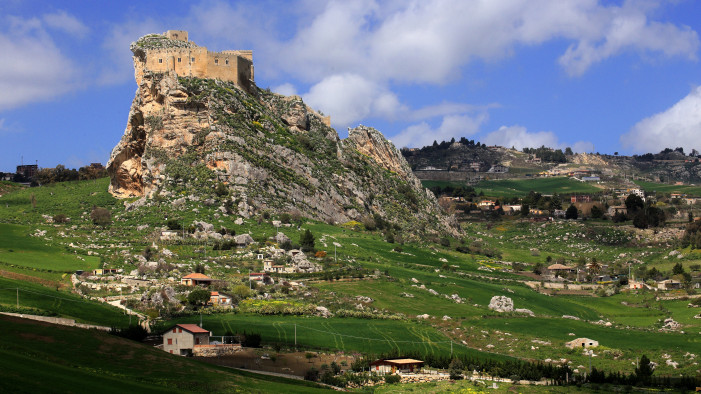在欧洲一些地方,一套房子只要一美元

|
几年前,32岁的澳大利亚电工马克·科潘偶然在报纸上看到一篇关于西西里岛待售房屋的文章。一欧元的房屋标价引起了他的注意。 “我决定前往西西里岛一探究竟。”他告诉《财富》杂志,“几天后我不得不离开,但我很快回来,选定了一所房子。”这所房子目前还在翻修,等一切搞定,估计会花上3.5万美元。 尽管他被引诱以一美元的价格进行投资,并最终将支付很多倍于此的价格,但他还是非常高兴。“这是一笔非常棒的投资。”科潘说。科潘有意大利血统,持有意大利护照,他选择了住在所有屋主都梦寐以求的最高点。 “虽然我还没有入住,但穆索梅利(Mussomeli)的居民已经让我觉得自己是社区的一部分了。”他说。 像许多发达国家一样,大规模的城市化已经掏空了意大利的大部分农村地区以及穆索梅利这样的城镇。穆索梅利位于西西里岛的内陆,大约有1万名居民。曾经繁荣的村庄、小村子甚至是规模可观的城镇正在经历一代又一代的人口流失,尤其是年轻人的流失。这些被抛弃的地方提出了各种各样的方案,试图让人口数量重新增多,希望能够吸引那些厌倦了激烈竞争的人们来这里安安静静地重新开始。 因为这种人口转移,出现了一长串标价略高于1美元的待售房屋。 大约12年前,意大利西西里岛首套一欧元住宅正式进入市场。从那以后,数百栋房屋以类似条款售出,现在还有数百栋待售中。营销顾问毛里齐奥·贝尔蒂说,未来还会有成千上万栋的此类房屋出售,他建了一个网站,追踪不断扩大的一欧元住宅市场。 “二战结束时,意大利的人口有一半多都生活在农村地区。”贝尔蒂说,“但是今天,只有大约7%的人住在城市以外的地方。这种趋势导致农村地区的很多房屋弃置失修,大多村镇都面临人口减少以及老龄化的现状。” 贝尔蒂说,各类一欧元住房计划的目标都是让人口减少的地区重新增加人口,带来新的活力。 专事房地产和基础设施问题研究的Nomisma公司的董事总经理卢卡·唐迪说,要想让一欧元房屋的开局策略真正奏效,当地社区必须制定更全面的振兴战略。 “给一个小镇增加几个新居民不会有什么明显效果。”唐迪说,“这些房子之所以以如此低的价格出售,是因为被市场的力量压低了价值。但除非采取其他措施,为当地创造就业机会,说服出走的年轻人重回家乡,否则售房只不过是缓兵之计,该来的迟早要来。” 购房要做什么 当然,潜在的购房者将不得不处理购房所需的一套相当多的繁文缛节,这在意大利司空见惯。比如,这些房子采用正式出售的形式而非赠予,是为了规避一项法律,该法律允许房屋继承人在多年后仍然有权对送出的房产提出异议。贝尔蒂说,即使房屋售价低廉,新房主在拿到钥匙前也要支付几千欧元的公证费、注册费和税。 法国和英国正在进行小规模试验,据报道,希腊的一些岛屿也正在考虑类似意大利的计划。在西班牙,一些有多套房子的完全被废弃的小村庄,以城市里一套房屋的价格出售。但在意大利,这一战略更为成熟,在全国各地的覆盖范围也要广得多。 不同社区的规则不尽相同,但大多数都使用积分系统对感兴趣的人进行评估:夫妻通常比单身者得分高。有年幼子女的潜在买家,或打算在该地区做生意的人,或以其他方式为社区提供工作岗位的人,评分也会更高。使用对环境影响低的材料或雇佣当地建筑商翻新房屋的人可以得到额外的分数。许多城镇要求翻新后的房屋成为买家的主要居所。 当然,正如科潘的例子所证明的,要想入住一座可能已经弃置了几十年的房子,翻修是一笔不可避免的花费。 但那些大胆迈出这一步的人表示,他们对自己的选择十分满意。 29岁的荷兰人玛丽耶·格拉夫斯玛和31岁的库尔德人奥万·阿卜杜拉夫妇俩可谓是这类计划的理想买主,他们用1美元在撒丁岛(Sardinia)买了一座8居室的房子,花了16.5万美元装修。他们现在把其中三个房间用作客栈,还计划把自己在乌得勒支创建的时尚品牌搬到他们的第二故乡奥洛拉伊(Ollolai),雇佣当地的技工。 阿卜杜拉在接受《财富》杂志采访时表示:“我们正在慢慢聊这个问题,但我们有一些宏大的计划,我们打算把精力投入到这个时尚品牌上,或许还会在斯梅拉尔达海岸(Costa Smeralda)开一家店。”斯梅拉尔达是撒丁岛时髦的北部海岸。 “来这里意味着选择了一种不同的生活方式。”格拉夫斯玛在一次采访中说,“我们想要更宁静、节奏更慢的生活,现在十分幸福。”(财富中文网) 译者:Agatha |
A few years ago, Mark Kopun, a 32-year-old electrician from Australia, happened to spot a newspaper article about homes for sale in Sicily. The price tag—one euro—caught his eye. “I headed to Sicily to check it out,” he told Fortune. “I had to leave after a few days, but I went back as soon as I could and I picked a house.” He’s still renovating the place, and he expects, when it’s all said and done, he’ll have shelled out around $35,000 to finish the work. Even though he was lured into the investment for the equivalent of a buck, and will ultimately pay many times that, he couldn't be happier. “It’s a fantastic investment,” said Kopun, who is of Italian descent and holds an Italian passport, choosing to dwell on an upside all new homeowners dream of. “I’m not living there yet but the residents of Mussomeli, the city, already make me feel like I am part of the community,” he said. As is the case in much of the developed world, mass urbanization has hollowed out much of rural Italy, and towns like Mussomeli, a town of roughly 10,000 inhabitants in Sicily’s interior. Once thriving villages, hamlets and even decently sized towns are losing population—particularly young people—generation by generation. Those left behind have responded with various plans trying to grow the population again, hoping to entice people who’ve become sick of the rat race to start over in these quiet communities. This population shift has produced a long list of houses for sale for a little more than a dollar each. The first house to be offered for sale in Italy for one euro hit the market around a dozen years ago, in Sicily. Since then, many hundreds have sold under similar terms and hundreds more are for sale now. And thousands more are due to list in the future, says Maurizio Berti, a marketing consultant who built a website to track the growing market in one-euro homes. “At the end of World War II, a little more than half of Italy’s population lived in rural areas,” Berti said. “But today, only around 7 percent of the country’s population is based outside cities. That trend has left a lot of rural houses abandoned and falling into disrepair, a lot of villages and towns with dwindling and elderly populations.” The goal of the various one-euro home initiatives, Berti said, is to help repopulate and bring new vibrancy to areas with declining populations. If the gambit is to work for the communities selling the one-euro homes, it must be part of a broader local renewal strategy, says Luca Dondi, managing director of research firm Nomisma who specializes in real-estate and infrastructure issues. “Adding a few new residents to a town won’t make a big difference,” Dondi says. “The homes are sold for such low prices because market forces push the value down. But unless there are other steps are taken to create jobs in the area and convince young people from the area to return, then it just delays the inevitable.” Here’s what it takes Of course, prospective homebuyers will have to deal with a fair share of red tape surrounding the purchases, par for the course in Italy. The fact that the houses are formally being sold rather than given away, for example, is to work around a law that allow heirs to contest properties given away even years later. And even with the low price tag, Berti said potential owners will still end up paying a few thousand euros in notary fees, registration costs, and taxes before they are given the keys. France and the U.K. are experimenting with similar, small-scale versions of the initiative, and some islands in Greece are reportedly mulling plans akin to those in Italy. In Spain, some completely abandoned hamlets made up of multiple homes have been sold for the price of a single home in an urban setting. But in Italy, the strategy is more established and far more diffuse geographically up and down the country. Rules change from community to community, but most use a point system to evaluate interested parties: couples usually rate higher than single people. Potential buyers with young children or those who plan to open a business in the area or otherwise provide jobs in the community also do better. Refurbishment projects that use low-environmental-impact materials or employ local builders earn extra points. Many towns require the refurbished home to be a buyer’s primary residence. And of course, as Kopun can attest, there is the unavoidable cost of renovating a house that in some cases have been abandoned for decades. But those who have made the leap say they are pleased with their choices. If there is an ideal couple for the initiatives it might be Marije Graafsma, 29, from the Netherlands, and Ovan Abdullah, a 31-year-old Kurd, who spent around $165,000 to refurbish an eight-room home they bought for one euro in Sardinia. Now they use three of the rooms for a bed and breakfast and they are planning to move the fashion brand they started back in Utrecht to their adopted home town, Ollolai, using local artisans. “We’re talking it slowly, but we have big plans to put energy into the fashion brand and maybe open a shop on the Costa Smeralda,” Abdullah told Fortune, referring to the chic northern shore of Sardinia. “It’s a lifestyle choice to come here,” Graafsma said in an interview. “We wanted more tranquility and a slower pace of life and we couldn’t be happier.” |













